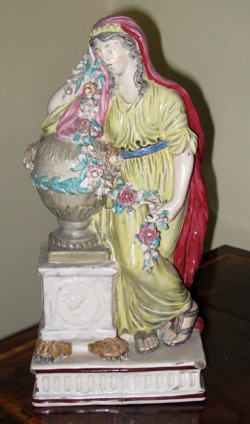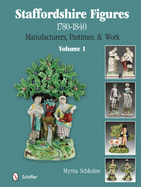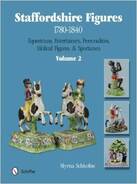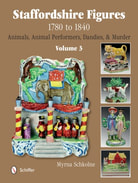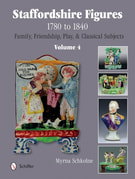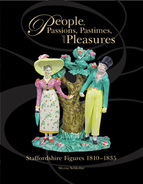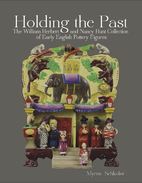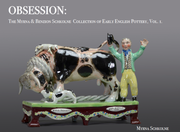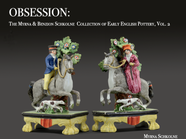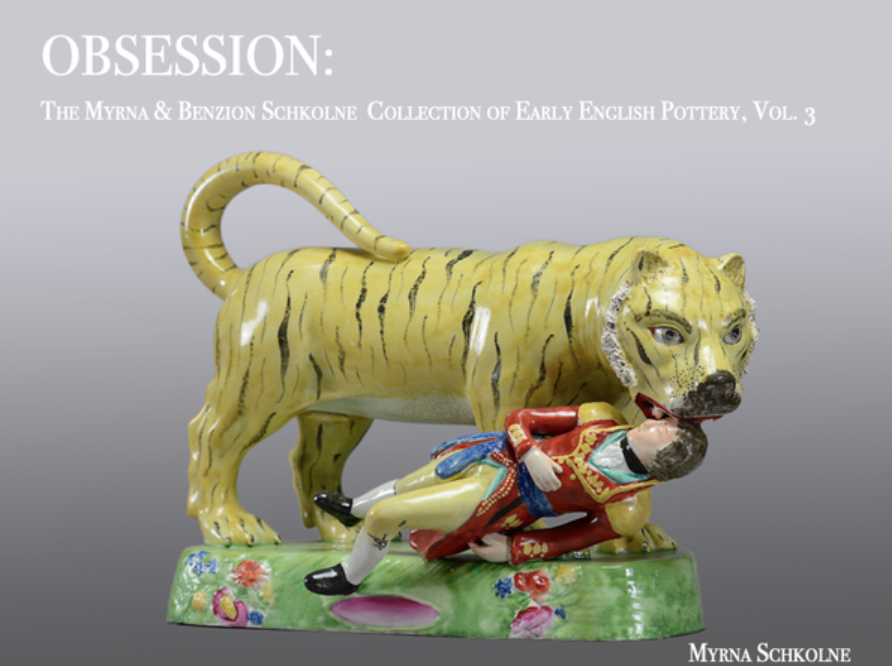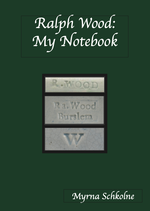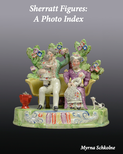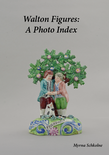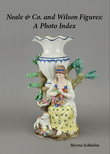Three grief stricken ladies. Who are they? These figures are catalogued incorrectly SO frequently that it has taken me a while to sort out who is who...and why. So here goes.
1. Andromache Weeping Over the Ashes of Hector
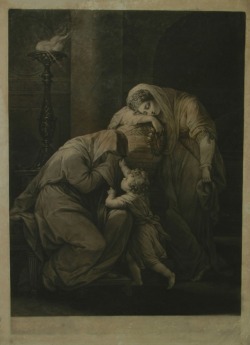
Andromache weeping over the ashes of Hector, a mezzotint byThomas Burke after Angelica Kauffman, published by WW Rylands,1771.
Apologies for the bad picture. The first figure is clearly Andromache weeping over the ashes of Hector because it is derived from a print so titled. I must admit that until I found the print, I had some trouble believing this. Hector was killed in the Trojan War and his body was returned to Andromache. The Iliad describes Andromache as lamenting over Hector's body--not his ashes! Jacques-Louis David's oil painting of c1780 also shows Andromache weeping over Hector's body--neither an ash nor an urn in sight. Seems that Angelica Kauffman painted the scene (with ashes?), inspiring the mezzotint above. Derby had made figures after the mezzotint by 1780, and this probably inspired earthenware look-alikes--usually made in Leeds.
2. Charlotte at the Tomb of Werther.
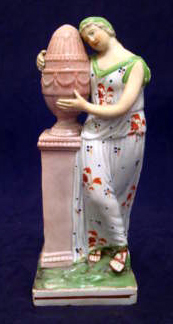
Staffordshire figure of Charlotte at the Tomb of Werther. Circa 1790-1810. Height approx. 9".
The Sorrows of Young Werther was a German novella published in 1774. Werther kills himself when he cannot have Charlotte, the woman he loves. Charlotte buries him under a linden tree. Again there is no mention of ashes, so is the figure clutching a funeral urn Charlotte?
Fascinating factoid.
The linden tree, a.k.a. the basswood tree, is known as the tree of lovers because of its heart-shaped leaves. I have one bang outside my office window and love watching the squirrels and woodpeckers play in it!
Goethe's book was first published in English in 1779. In 1785, a tragic adaptation by Frederick Reynolds debuted on the London stage. Derby modeled Charlotte Weeping for Werther around then, and the first Staffordshire figures, some looking like the Derby ones (did Derby copy Staffordshire, or was it the other way around?), were probably made in this period.
Interestingly, a molded relief of Charlotte at the Tomb of Werther is found on a Wedgwood ware. The design shows a classically attired maiden, kneeling with head bowed, at the base of a funeral urn that is mounted on a plinth. The design, by Lady Elizabeth Templetown, was issued by Wedgwood in 1790.
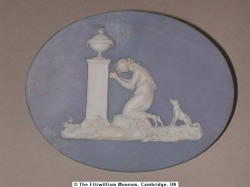
Wedgwood medallion, late 18th century, depicting Charlotte at the Tomb of Werther. In the collection of the Fitzwilliam Museum.
Yes, I know Wedgwood's design is far removed from our figure. Yet there is no getting away from the urn on a pillar that appears with both the Staffordshire figures and the Wedgwood design. Did the figures influenced Lady Elizabeth Templeton's design, or was it the other way around? Which came first? I don't know. But any way you look at it, figure #2 appears to be Charlotte at the Tomb of Werther.
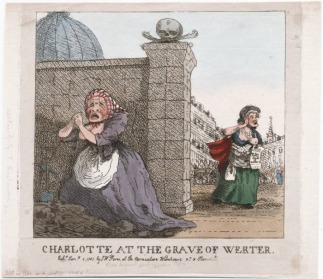
This caricature of 1788 is as close as I can come for a pictorial source for the figure. Somehow, it's not in the right spirit!!...but don't you love it!
3. Agrippina with Germanicus's Ashes. If you look at my blog posting of Dec 16, 2008, you will see a seated lady clutching a funeral urn. (See the picture below.) I explain that Halfpenny dubs this figure Antonia with Germanicus's Ashes. However, the figure really depicts Agrippina with Germanicus's Ashes--probably the figure was derived from Runciman's print of c1772 that now belongs to the Tate.
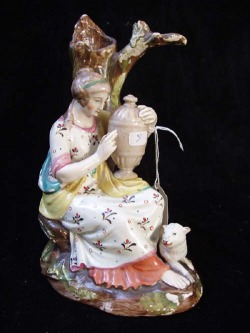
Staffordshire figure of Agrippina with the Ashes of Germanicus. Circa 1800. H:~8"
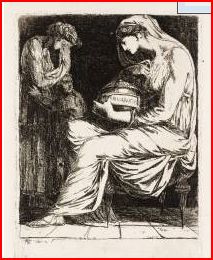
The Tate says of this etching: "A large picture of this subject by another Scottish artist, Gavin Hamilton, is also in the Tate's collections; it was shown at the Royal Academy in 1772, the probable year of this etching. Runciman himself produced an oil painting on the theme for the R.A. in 1780. The subject was therefore a standard one for the neo-classical period, and Runciman's treatment of it here sums up the Grecian inspiration of the time.
Many thanks to my friends in New Zealand for posing this interesting question.
